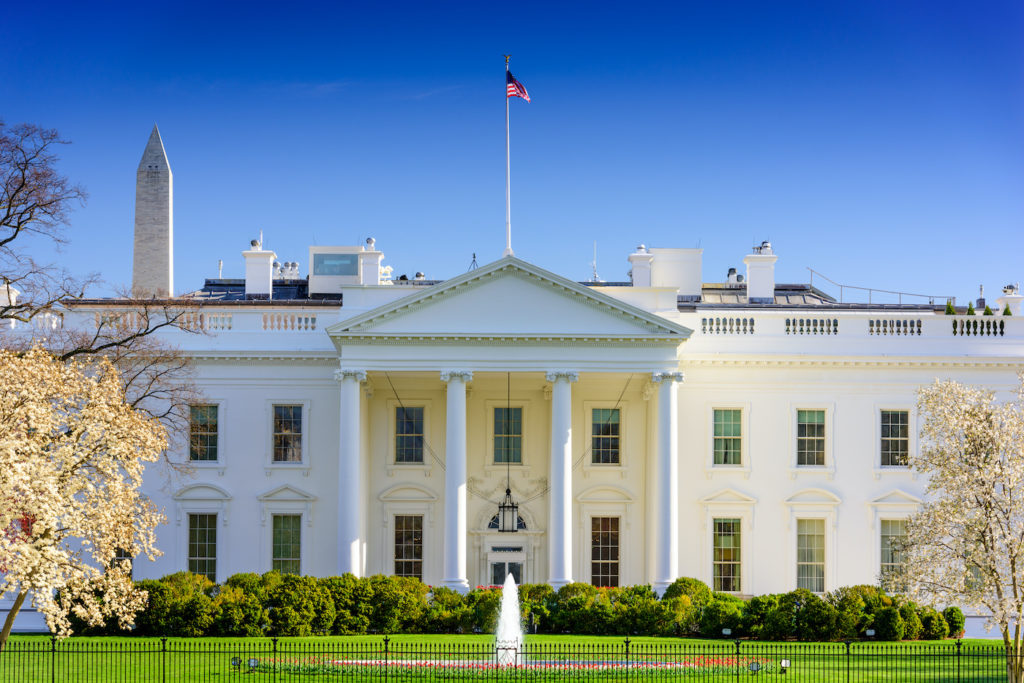The Coronavirus Aid, Relief, and Economic Security Act is a three hundred thirty–page behemoth of a statute signed by President Trump on March 27, 2020. It is much more than an overwrought doorstop. Passed by a unanimous Senate and by voice vote in the House, the “CARES” Act is the largest relief bill in American history. It authorizes and regulates the disbursement of up to two trillion dollars in federal financial relief to people and institutions across the country, all to help fight COVID-19 and the economic fallout from it.
The most welcome of the Act’s provisions is the most widely known: checks for $1,200 are on their way to each American taxpayer. These payments phase out beginning for those with incomes over $75,000, and disappear at $100,000. It should surprise no reader that these checks do not phase out, nor do they ever disappear, depending upon the recipient’s religion. That one is a person of faith has no effect upon eligibility. Nothing in the law even prevents anyone from tithing his or her entire check to a church, or to a religious nonprofit like the Saint Vincent DePaul Society.
The CARES Act also distributes many billions of dollars (in forms ranging from outright grants to forgivable loans backed by the government) to non-profits and small businesses. Here one might expect that it would be similarly taken for granted that the religious affiliation or identity of an otherwise eligible nonprofit or small business would be irrelevant. Unfortunately, misguidedly secularist readings of the First Amendment’s Establishment Clause threatened that expectation—until the Trump administration issued late last Friday (April 3) the needed clarifications. These clarifications may yet be challenged in court by strict separationist groups. They nonetheless should be upheld in court. They should also be received more broadly as a valuable contribution, not only to the COVID-19 relief effort, but to church–state constitutional law.
Although the CARES Act explicitly makes nonprofit organizations eligible for the Paycheck Protection Program, for example, it does not directly address the eligibility of faith-based nonprofit organizations, including houses of worship. In the absence of clear guidance from Congress, confusion quickly ensued about whether religious organizations would have access to this program, and if so, under what terms—with suggestions coming from several quarters that houses of worship, at a minimum, could not receive these largely forgivable loans. To add to the confusion, the Small Business Administration (which is administering the program) has regulations in place stating that entities primarily “engaged in teaching, instructing, counseling or indoctrinating religion or religious beliefs” are barred from participating in SBA’s business loan program (which would seem to include PPP) as well as its Economic Injury Disaster Loan program. (See 13 C.F.R. §§ 120.110(k) and 123.301(g)).
Start your day with Public Discourse
Sign up and get our daily essays sent straight to your inbox.The Trump administration cut through the confusion with a clear statement of the legal framework governing participation of faith-based organizations in the loan program. In a Frequently Asked Questions document, SBA first confirmed that faith-based organizations—including houses of worship—are indeed eligible to participate in these programs. It declared that it would not enforce its two regulations that exclude some religious entities from participating in loan programs on the basis of their religious character, and implied that it believes those regulations to be unconstitutional. This would seem to be a straightforward application of the Supreme Court’s 2017 Trinity Lutheran decision, which basically held (with some qualifications omitted here) that religious groups that are otherwise eligible may not be excluded from competing for government benefits because of their status as churches or as religions. It clarified that eligibility did not hinge on whether an entity provides secular social services.
The SBA also addressed whether there are any limitations on the way that faith-based organizations may use loan funds they receive. Here, the SBA clarified that faith-based loan recipients are situated identically to all other recipients: subject to the same limitations and program requirements, but nothing more. Specifically—anticipating a question that was surely on the minds of many religious organizations—the SBA made clear that program loans “can be used to pay the salaries of ministers and other staff engaged in the religious mission of institutions.” The Establishment Clause properly understood does not require otherwise.
When the Trump administration’s clarifying guidelines go to court, they not only should be upheld, but one hopes—and even dares to expect—that the compelling circumstances of this public benefit program will bring forth a needed clarification of Establishment Clause law: one that finally buries the impetus behind the confusion that surrounds the CARES Act and religious eligibility. This impetus is the Court’s initiative, starting in earnest in 1970, to privatize religion—to make it an alien or allergen vis à vis public authorities in the United States.
The initiating case was Lemon v. Kurtzman. Chief Justice Burger wrote for seven members of the Lemon Court that “the Constitution decrees that religion must be a private matter for the individual, the family, and the institutions of private choice, and that, while some involvement and entanglement are inevitable, lines must be drawn.” This bold privatizing imperative is encoded in Lemon’s twin requirements that every public act have a “secular” purpose and that no such act have the (primary or principal) effect of “advancing” religion. Lemon established, and the Court has since held, that government efforts to promote religion, even where no one alleges that it is exercising coercion or favoritism among religions, lack the requisite “secular” purpose. The Lemon Court assumed, without explanation or justification, that promoting religion—admittedly, an undertaking only awkwardly describable as “secular”—was no legitimate part of care for the temporal common good of the polity.
This Lemon is overripe. The stars are aligned for its overruling. The Supreme Court is obviously on a journey, moving from decades of secularist readings of the Establishment Clause, launched in Lemon, to a center of gravity that is much more hospitable to religion and religious institutions. One hopes, and dares to expect, that the prospective challenge to the CARES Act will be the occasion to finally kick in the rotten door of Lemon.
On June 20, 2019 a badly splintered Court upheld the “Bladensburg Cross” (in the case of American Legion v. American Humanist Association). There was a total of seven opinions. A majority agreed nonetheless with this part of Justice Alito’s plurality opinion: “Lemon ambitiously attempted to distill from the Court’s existing case law a test that would bring order and predictability to Establishment Clause decision-making.” Alito understated the verdict: “The expectation of a ready framework has not been met, and the Court has many times either expressly declined to apply the test or simply ignored it.”
The truth is less flattering. In his concurrence, Justice Kavanaugh said that the Alito “opinion identifies five relevant categories of Establishment Clause cases,” which Kavanaugh dutifully listed. He then asserted that the “Lemon test does not explain the Court’s decisions in any of those five categories.” In fact, Lemon is one of the most frequently, and most colorfully, derided Supreme Court cases in history. The Bladensburg Court itself cited a huge critical chorus, comprising scholars and lower-court judges alike. The Court has joined in, with gusto: as long ago as 1993 Justice Scalia lampooned Lemon: “Like some ghoul in a late-night horror movie that repeatedly sits up in its grave and shuffles abroad, after being repeatedly killed and buried, Lemon stalks our Establishment Clause jurisprudence once again, frightening the little children and school attorneys.” It is so bad now that one can get a laugh from professional audiences by posing the question: Is the infamous three-part test named “Lemon” due to one party’s name—or because it works so poorly?
The Bladensburg Court’s criticisms of it would surely lead readers to think that they were attending Lemon’s funeral. And, in one of the first post–Bladensburg monument decisions, the Eleventh Circuit pronounced that “Lemon is dead.” “Well, sort of,” the Court added in Kondrat’yev v. City of Pensacola. “It’s dead, that is, at least with respect to cases involving religious displays and monuments—including crosses.” The Supreme Court treated Lemon as if it were a stinking carcass. Yet it refused to perform the deserved requiems.
It is not that Lemon is no longer worth overruling, as if has been so hemmed in by later decisions that there is scarcely anything left to actually jettison. Lemon’s doctrine—its infamous three-part test—is battered. Its secularist principle is perforated, and now wobbly. But the Court has not yet consigned it to the grave. The obvious necessity of government partnerships with communities of faith, on the same terms as with everyone else, to fight the pandemic and to rebuild the economy after it, may supply the last nails for the coffin.














